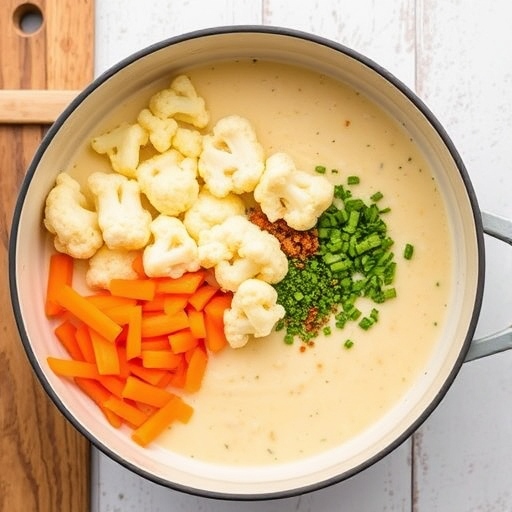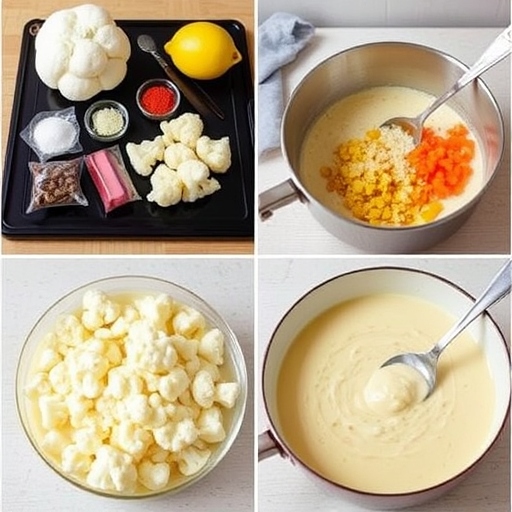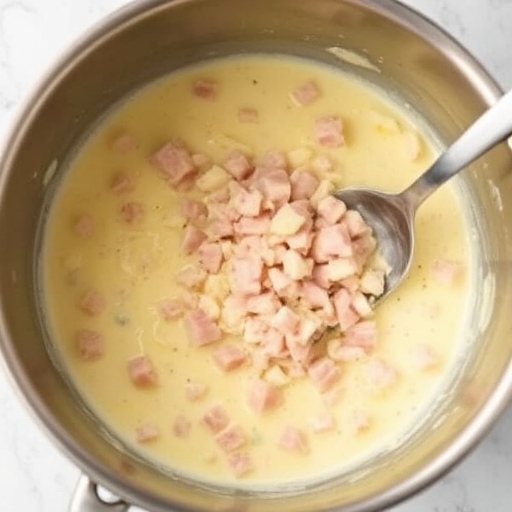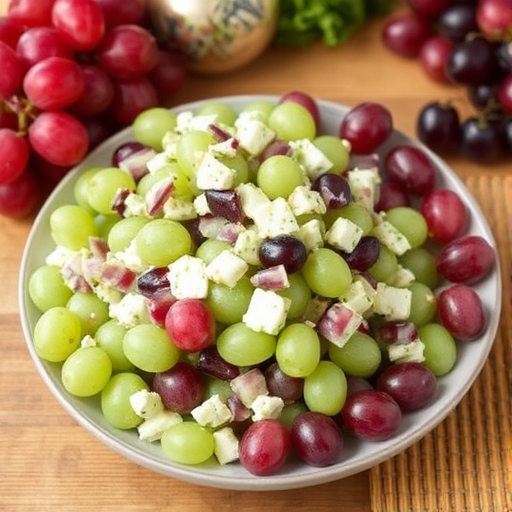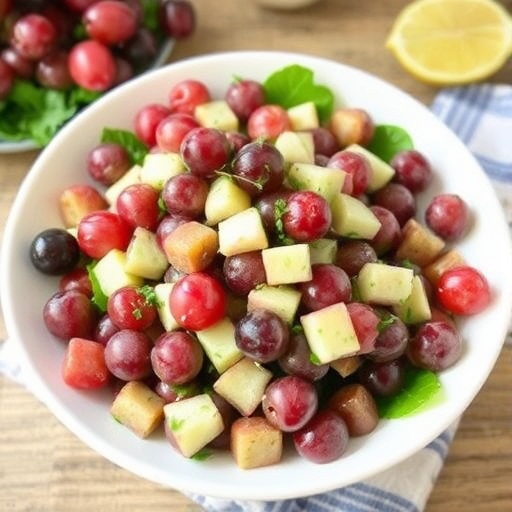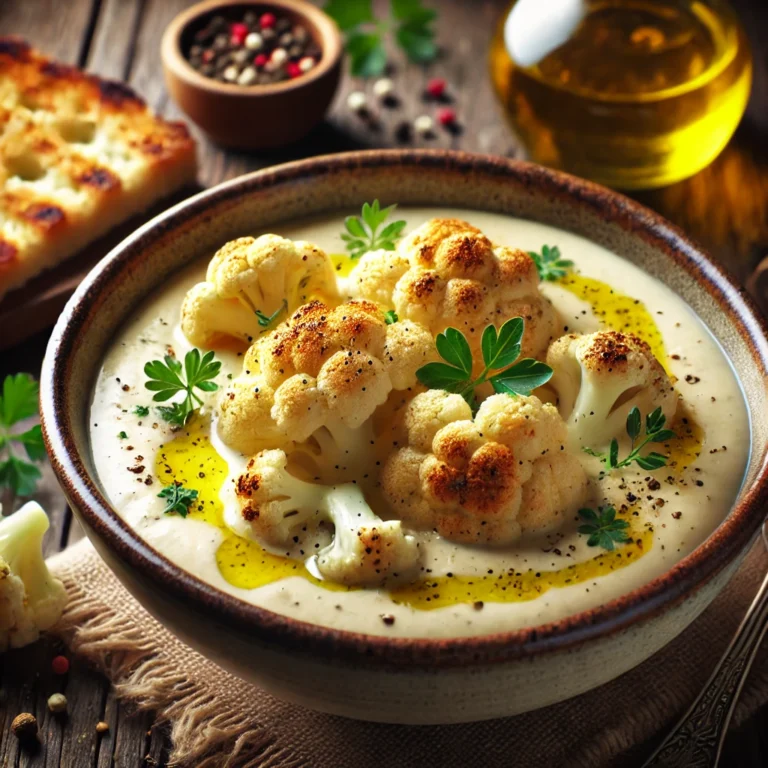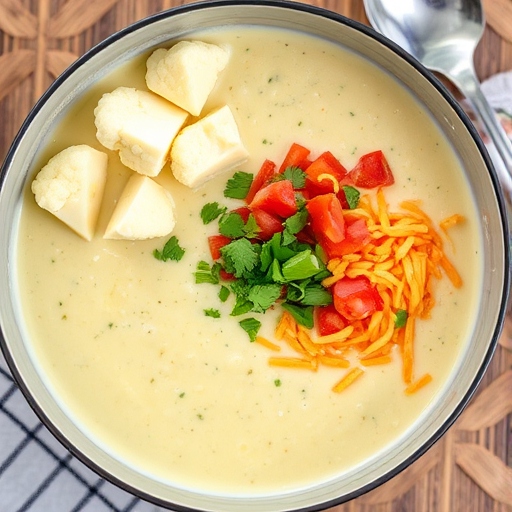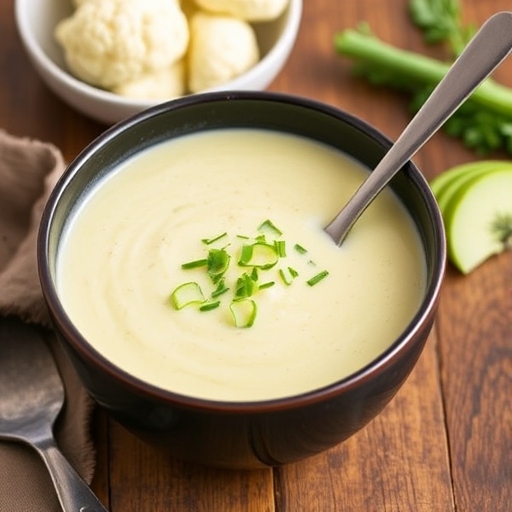Introduction
Macaroni coleslaw is the perfect fusion of two classic comfort foods: creamy coleslaw and hearty macaroni salad. This dish combines tender pasta with crisp, crunchy vegetables and a creamy dressing that’s tangy, sweet, and utterly satisfying. Whether served at a barbecue, picnic, or family gathering, macaroni coleslaw is sure to become a favorite at your table. The best part? It’s quick to prepare, customizable to your preferences, and a guaranteed crowd-pleaser!
Table of Contents
The Story Behind Macaroni Coleslaw
While both macaroni salad and coleslaw have long histories in American cuisine, the combination of the two into one dish became popular as part of the growing trend for salad recipes in the 20th century. Macaroni salad, often associated with summer picnics and barbecues, was a staple in American homes, as was coleslaw—a dish that dates back to the early Dutch settlers in New York. The two came together as a playful and delicious way to enjoy the creamy textures and fresh crunch in one dish. Macaroni coleslaw adds an extra layer of comfort, offering the best of both worlds with every bite.
The Benefits of Making Your Own Macaroni Coleslaw
- Fresh Ingredients: Homemade macaroni coleslaw lets you control the quality of the ingredients, using fresh, seasonal vegetables and real, wholesome ingredients.
- Customization: You can easily adjust the level of sweetness, tanginess, or creaminess to suit your tastes.
- Versatility: Perfect for serving at a variety of events, from casual barbecues to potlucks. It pairs well with meats, seafood, and even as a stand-alone dish.
- Healthier Option: By making your own dressing, you avoid unnecessary preservatives, while still enjoying the creamy indulgence of store-bought versions.
Essential Ingredients for the Perfect Macaroni Coleslaw
- Macaroni Pasta: Small elbow macaroni or shell pasta is ideal for soaking up the creamy dressing.
- Cabbage: Finely shredded green cabbage is the base of any good coleslaw, adding crunch and freshness.
- Carrots: Shredded carrots provide sweetness and color to the dish.
- Red Onion: Adds a mild onion flavor with a pop of color.
- Mayonnaise: The creamy base of the dressing, bringing richness to the dish.
- Vinegar: Apple cider vinegar or white vinegar adds tanginess to balance the richness of the mayo.
- Sugar: A bit of sugar enhances the sweetness of the coleslaw, balancing the acidity.
- Dijon Mustard: For a touch of sharpness and depth of flavor.
- Celery Seed: Adds a subtle aromatic note that’s typical in classic coleslaw.
- Salt and Pepper: Essential seasonings for enhancing the flavor.
Cultural History of Ingredients
- Macaroni Pasta: Though associated with Italian cuisine, pasta became widely popular in the U.S. during the 19th century, particularly after the Italian immigration waves.
- Cabbage: This versatile vegetable is a staple in many global cuisines, dating back to ancient civilizations, and has been an essential ingredient in coleslaw for centuries.
- Mayonnaise: Believed to have originated in France in the 18th century, mayonnaise became popular in the U.S. by the late 1800s and remains a key ingredient in many salad recipes, including macaroni and coleslaw.
Equipment You’ll Need
- Large mixing bowl
- Pot for boiling pasta
- Strainer for draining pasta
- Grater for shredding vegetables
- Whisk for mixing dressing
- Measuring spoons for seasonings
Step-by-Step Instructions for Macaroni Coleslaw
- Cook the Pasta: Bring a large pot of salted water to a boil. Add the macaroni and cook according to package instructions, about 8-10 minutes, until tender. Drain and set aside to cool.
- Prepare the Vegetables: While the pasta is cooking, shred the cabbage and carrots. Finely chop the red onion.
- Make the Dressing: In a separate bowl, whisk together mayonnaise, vinegar, sugar, Dijon mustard, celery seed, salt, and pepper until smooth. Adjust the sweetness and tanginess to your taste by adding more sugar or vinegar if needed.
- Combine the Ingredients: In a large mixing bowl, combine the cooked and cooled pasta with the shredded vegetables.
- Add the Dressing: Pour the dressing over the pasta and vegetable mixture. Stir until everything is well-coated.
- Chill: Refrigerate the macaroni coleslaw for at least 30 minutes before serving, allowing the flavors to meld together.
- Serve: Serve chilled as a side dish at your next gathering or barbecue.
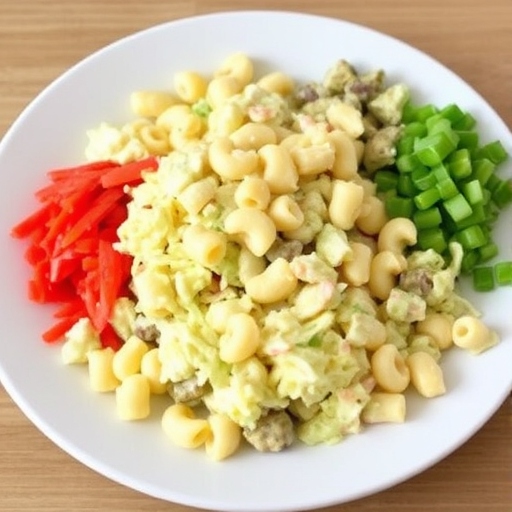
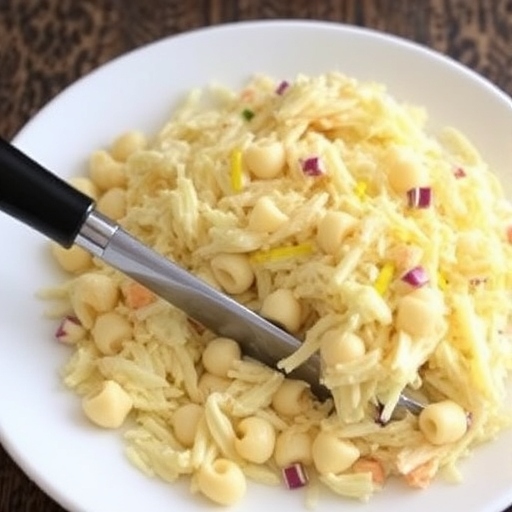
Suggestions for Serving and Storing
- Serving: Macaroni coleslaw is perfect as a side dish for grilled meats, such as burgers, hot dogs, or chicken. It also complements seafood dishes, like shrimp or grilled fish.
- Storing: Store leftover macaroni coleslaw in an airtight container in the fridge for up to 3 days. The flavors improve as it sits, but the salad may become slightly wetter over time due to the moisture from the vegetables.
Chef Simon’s Tips for Macaroni Coleslaw
- Make it Ahead: Macaroni coleslaw tastes even better when made a day ahead. The pasta and vegetables have more time to soak up the dressing.
- Customize with Add-ins: Consider adding diced apples, raisins, or chopped celery for an extra layer of flavor and crunch.
- Use a Tangy Vinegar: Apple cider vinegar or white vinegar adds the perfect amount of tang, balancing the sweetness of the mayonnaise.
- Chill the Salad: Let the coleslaw chill for at least 30 minutes to allow the flavors to develop and the dressing to thicken.
Emotional and Psychological Impact of Food
Food has a powerful emotional connection, and macaroni coleslaw is no exception. This dish, often served at family gatherings, brings feelings of comfort, warmth, and nostalgia. The creamy texture and sweet-tangy flavor evoke happy memories of summer days, picnics, and special celebrations. The simple act of sharing a bowl of macaroni coleslaw can strengthen bonds and provide a sense of belonging.
Mindful Cooking Techniques
As you prepare macaroni coleslaw, take the time to appreciate the different textures and colors of the ingredients. Notice the crispness of the cabbage, the sweetness of the carrots, and the softness of the macaroni. This mindful approach to cooking helps you connect with the food you’re preparing and enhances the enjoyment of the final dish.
Tips for Keeping the Recipe Fresh Longer
- To prevent the coleslaw from becoming too soggy, store the dressing separately and mix it in just before serving.
- If you plan to keep the salad for a few days, consider adding a little extra cabbage and carrots to maintain freshness.
Advanced Culinary Terms and Techniques
- Emulsifying: The process of combining the oil and vinegar-based dressing with the mayonnaise to create a smooth, cohesive sauce. This is essential for achieving the creamy texture of the coleslaw.
- Macerating: Letting the vegetables and dressing sit together to draw out moisture and blend the flavors before serving.
Healthy Ingredient Alternatives
- Mayonnaise: For a lighter version, use Greek yogurt or a mayo substitute like avocado.
- Sugar: You can substitute regular sugar with honey, maple syrup, or a sugar alternative like stevia.
- Pasta: Swap regular macaroni with whole wheat pasta or gluten-free pasta for a healthier option.
- Add Veggies: For added nutritional value, consider adding bell peppers, cucumbers, or peas.
More Serving Ideas
- Add a protein like grilled chicken or tofu to turn this macaroni coleslaw into a complete meal.
- Serve it alongside other salads, such as potato salad or a simple green salad with vinaigrette, for a diverse spread at your next event.
Common Issues and Solutions
- Too Runny: If the dressing is too thin, add more mayo or a bit of sour cream to thicken it.
- Too Sweet or Tangy: Adjust the sugar or vinegar until the flavor balance is to your liking.
- Wilted Veggies: To keep your vegetables crisp, don’t mix the dressing into the vegetables until just before serving.
- Dry Pasta: Ensure the pasta is cooked al dente and properly cooled before mixing it with the vegetables and dressing to avoid soggy noodles.
Variations to Try
- Bacon Macaroni Coleslaw: Add crispy bacon bits to the coleslaw for a savory crunch.
- Spicy Macaroni Coleslaw: Incorporate diced jalapeños or a teaspoon of sriracha sauce for a spicy twist.
- Asian-Inspired Macaroni Coleslaw: Replace the mayonnaise with a sesame dressing, and add soy sauce and ginger for an Asian flavor profile.
Nutritional Information and Health Benefits
Each serving of macaroni coleslaw (about 1/2 cup) provides approximately:
- Calories: 200
- Protein: 4g
- Fat: 12g
- Carbohydrates: 22g
- Fiber: 2g
- Sugar: 5g
- Sodium: 200mg
Health Benefits:
- Carbohydrates: The pasta in macaroni coleslaw provides a good source of energy from complex carbohydrates.
- Fiber: The vegetables like cabbage and carrots offer dietary fiber, which promotes healthy digestion and helps maintain a feeling of fullness.
- Healthy Fats: By using mayonnaise with healthy oils or alternatives like Greek yogurt or avocado, the dish can provide a healthier fat source.
- Vitamins: The cabbage and carrots are packed with essential vitamins like Vitamin A (from carrots) and Vitamin C (from cabbage), both of which support immune health.
The Art of Pairing Macaroni Coleslaw
Macaroni coleslaw pairs wonderfully with a variety of dishes, making it a versatile addition to any meal. Some of the best pairings include:
- Grilled Meats: Whether it’s hamburgers, hot dogs, or grilled chicken, macaroni coleslaw complements the smokiness of the meat.
- Seafood: Serve it alongside grilled shrimp or a fish fillet for a refreshing contrast.
- Barbecue: Macaroni coleslaw is a classic side dish for any barbecue spread, balancing the rich and smoky flavors of the grilled meats.
- Sandwiches and Wraps: Pair it with a turkey or ham sandwich or even a wrap for a delicious, satisfying meal.
- Vegetarian Options: It also works well with vegetarian dishes like veggie burgers or grilled portobello mushrooms, offering a satisfying crunch to complement the softer textures.
Weather and Recipe Outcome
Macaroni coleslaw is a dish that can be enjoyed year-round, whether you’re looking for a cooling side dish in the heat of summer or a hearty accompaniment to a winter meal. Its creamy, crunchy texture makes it equally appealing on a warm day as it does when served alongside a cozy, hot meal.
Other Salad Recipes to Explore
If you love macaroni coleslaw, you may also enjoy these other delicious salad options that offer similar comforting flavors and textures:
- Potato Salad: A classic side dish made with tender potatoes, eggs, and a creamy dressing.
- Classic Coleslaw: A tangy, crunchy salad made with shredded cabbage, carrots, and a vinegar-based dressing.
- Greek Pasta Salad: A Mediterranean-inspired salad with olives, feta cheese, cucumber, and a zesty dressing.
- Cucumber Salad: A refreshing and light salad made with cucumbers, dill, and a tangy vinaigrette.
Focus on Tools and Equipment
For making the perfect macaroni coleslaw, consider investing in the following kitchen tools:
- Food Processor: To quickly shred vegetables like cabbage and carrots.
- Large Mixing Bowl: Ensure you have a spacious bowl to mix all the ingredients thoroughly.
- Colander: A reliable colander for draining the pasta after boiling.
- Whisk: A tool that ensures your dressing is perfectly emulsified and smooth.
Frequently Asked Questions (with Answers)
1. Can I make macaroni coleslaw ahead of time?
Yes! In fact, macaroni coleslaw tastes even better when made a few hours or a day in advance. Just store it in an airtight container in the fridge, and let the flavors meld.
2. How do I make macaroni coleslaw less creamy?
If you want a lighter, less creamy version, reduce the amount of mayonnaise and replace it with Greek yogurt or a lower-fat option.
3. Can I use gluten-free pasta?
Absolutely! Substitute the regular pasta with gluten-free pasta to make this dish suitable for those with gluten sensitivities.
4. What can I add to macaroni coleslaw to give it a little kick?
For a spicy version, add diced jalapeños, red pepper flakes, or a bit of hot sauce to the dressing for extra heat.
5. How can I make macaroni coleslaw healthier?
You can make it healthier by using whole wheat or gluten-free pasta, substituting mayonnaise with a lighter option like Greek yogurt, and adding more vegetables like bell peppers or cucumbers.
Conclusion
Macaroni coleslaw is a versatile and easy-to-make dish that brings comfort and flavor to any meal. With its creamy dressing, crisp vegetables, and hearty pasta, it’s a crowd-pleaser that’s perfect for gatherings, picnics, or a simple family dinner. Whether you stick with the classic recipe or experiment with different add-ins and variations, this dish is sure to become a staple on your table. So, next time you’re craving a fresh, satisfying side, give macaroni coleslaw a try and enjoy the bright, tangy flavors in every bite!
Thank you for visiting SqueezyRecipes! We’re dedicated to making cooking enjoyable and accessible for everyone, regardless of your skill level. Chef Simon is always ready to share the best recipes that bring a creative touch to your daily meals. With each visit, you’ll discover new recipes and innovative ideas that cater to every occasion. Don’t miss out on exploring SqueezyRecipes for the latest delicious dishes, and feel free to leave your feedback and share your experiences with the recipes you’ve tried. Cooking together makes everything better!



